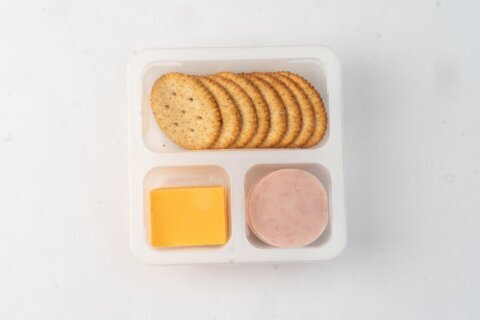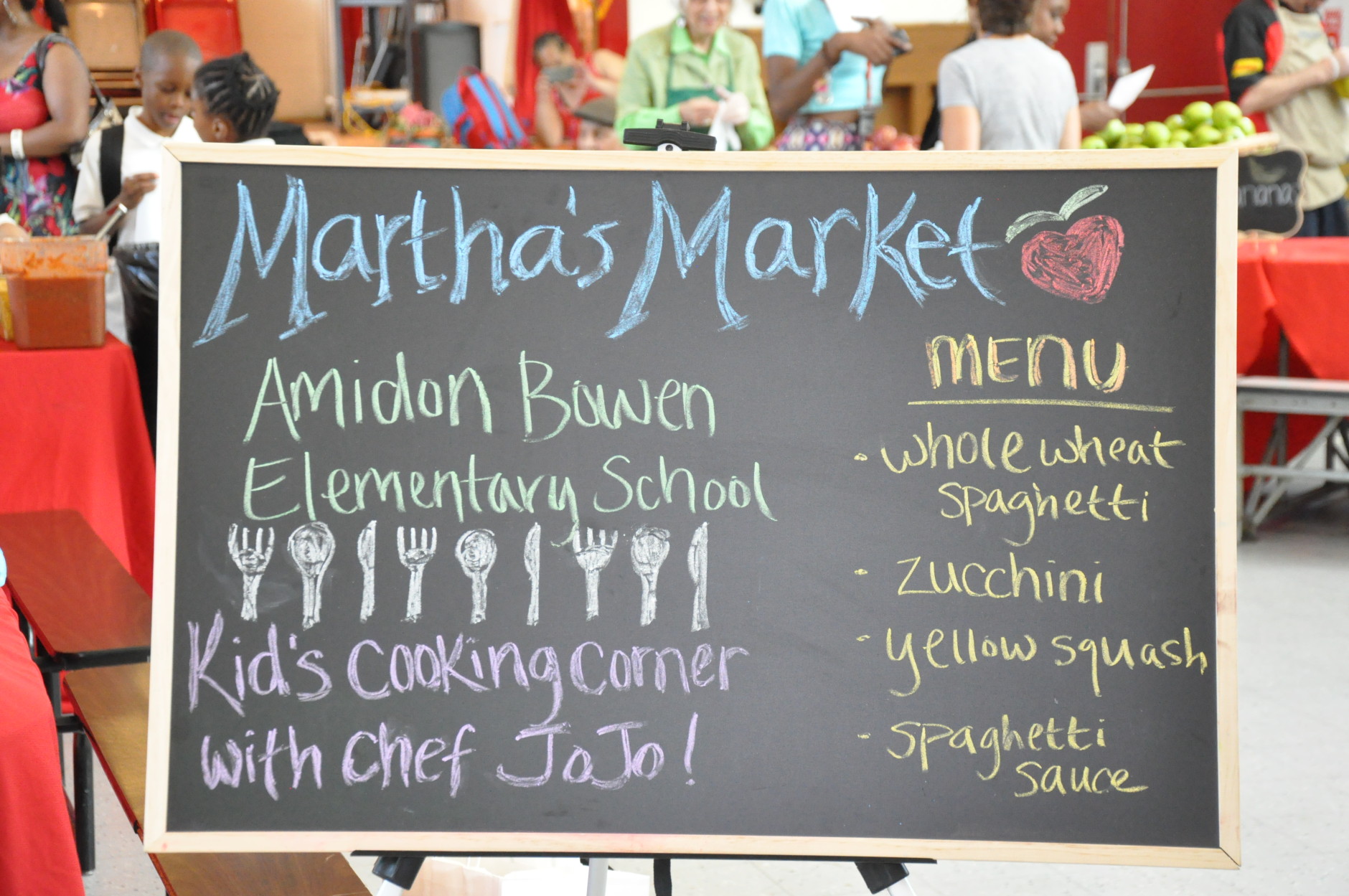
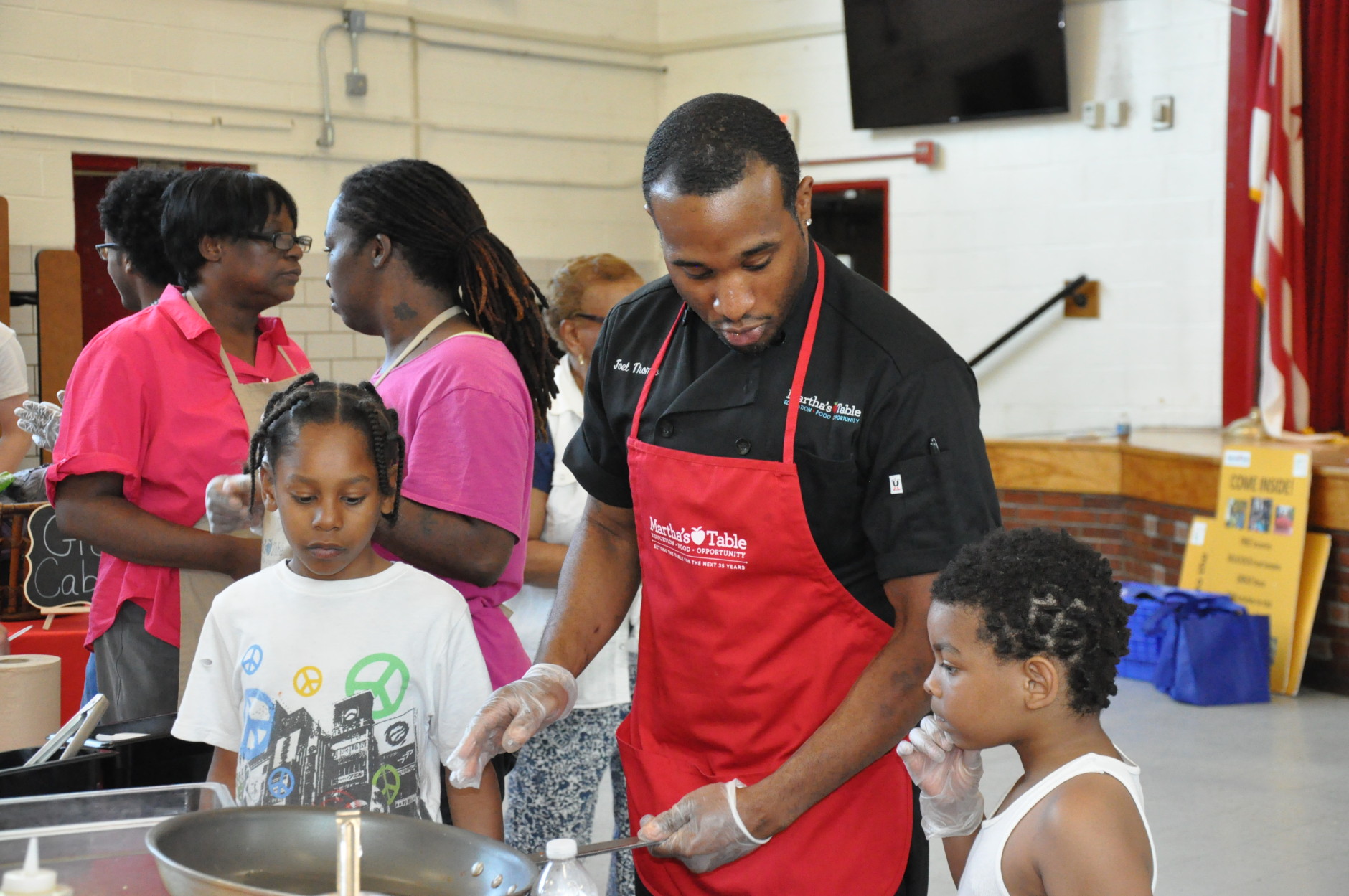
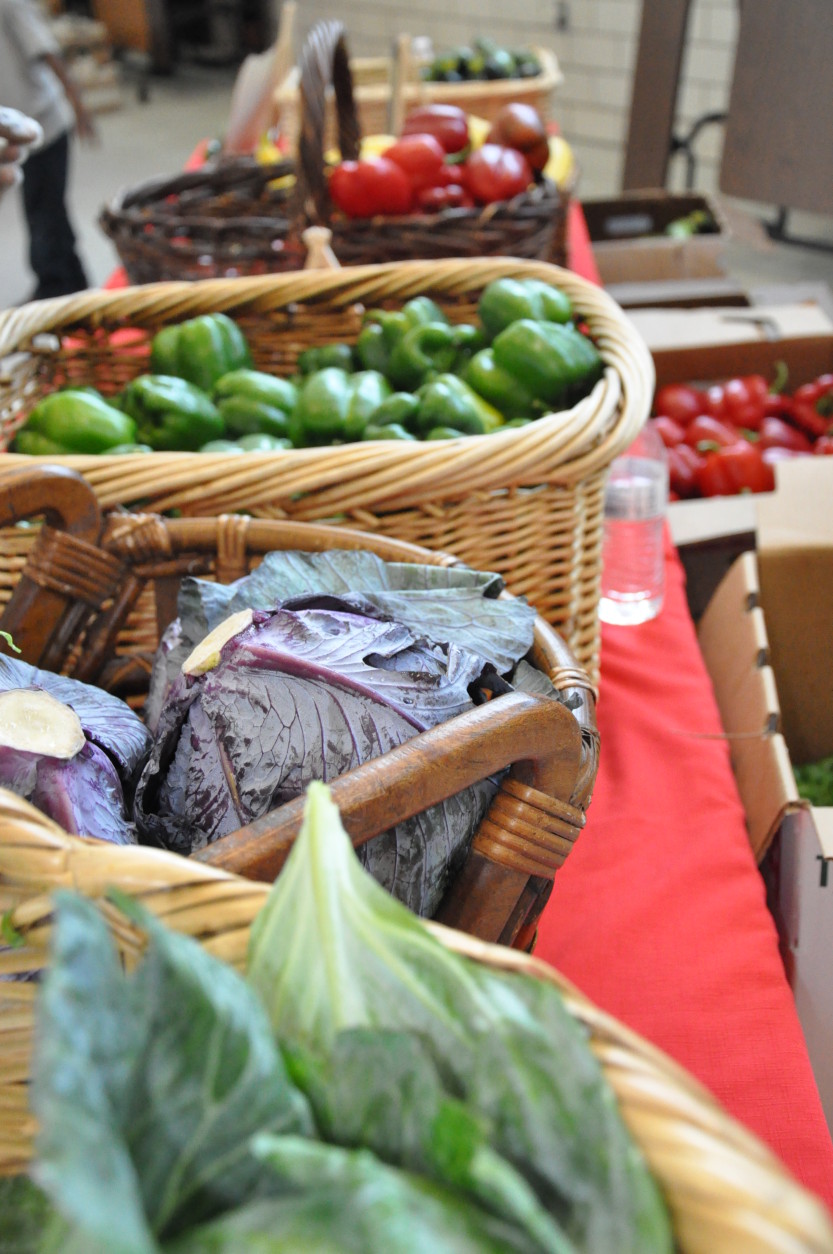
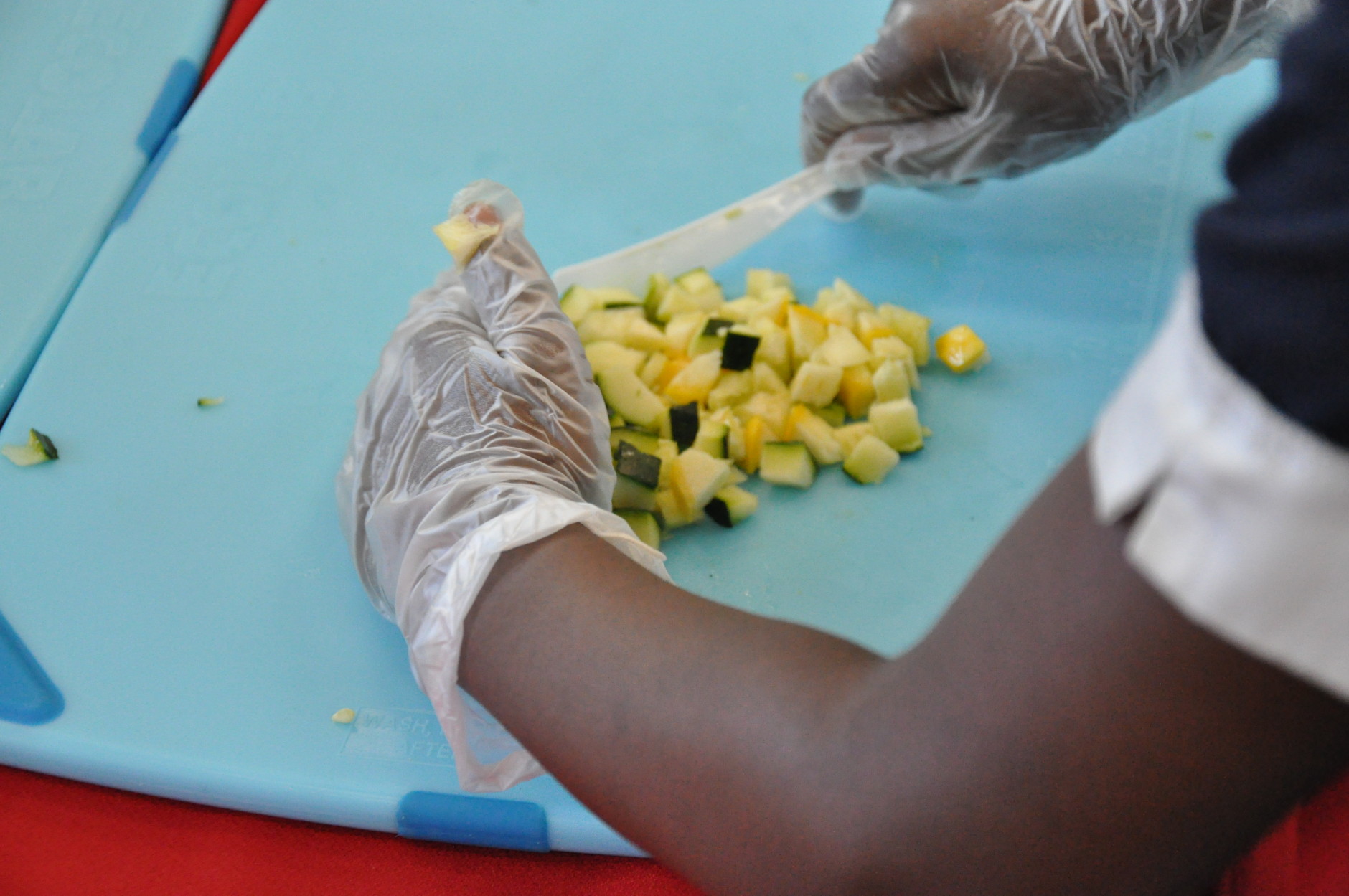


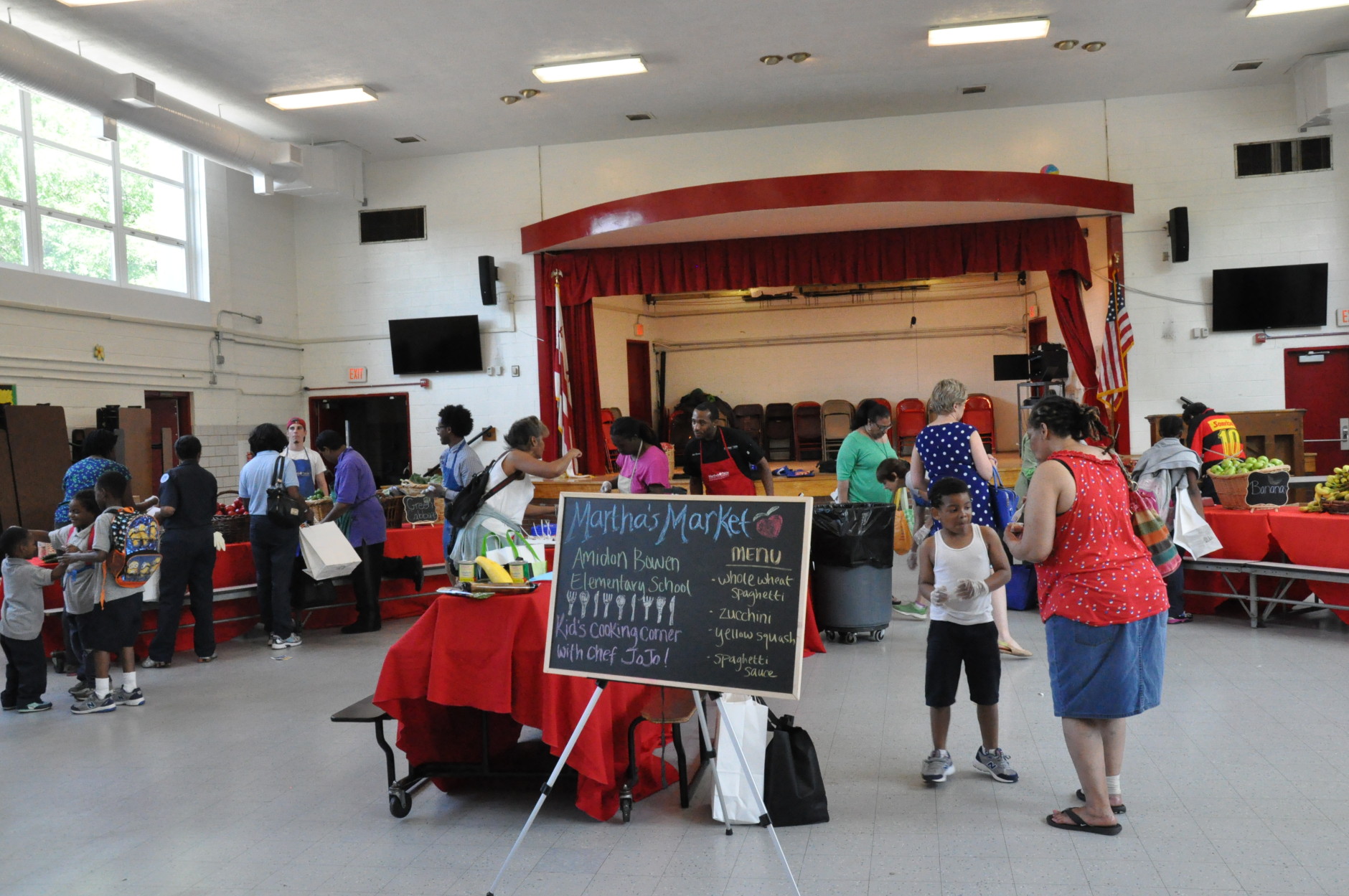
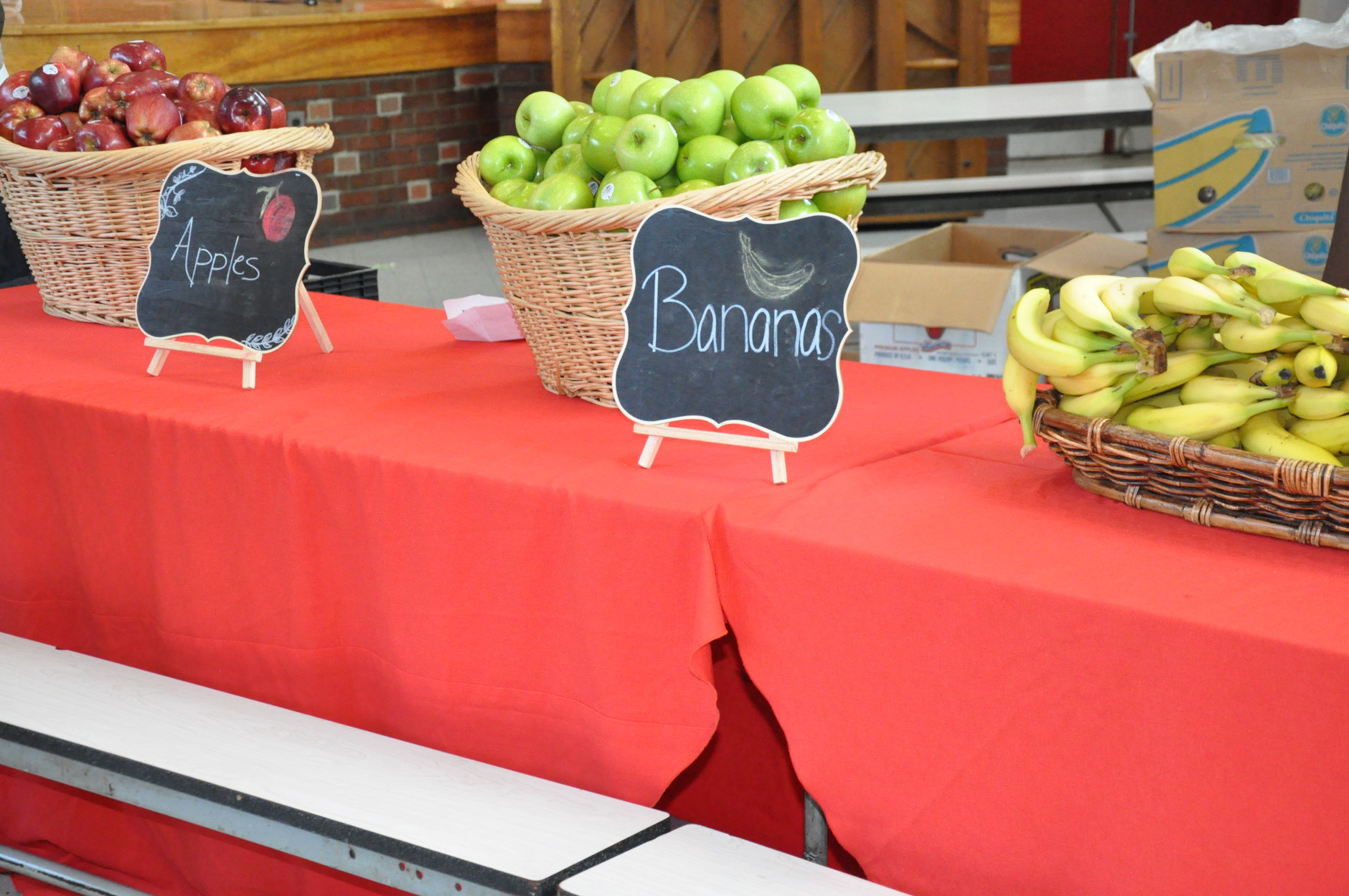
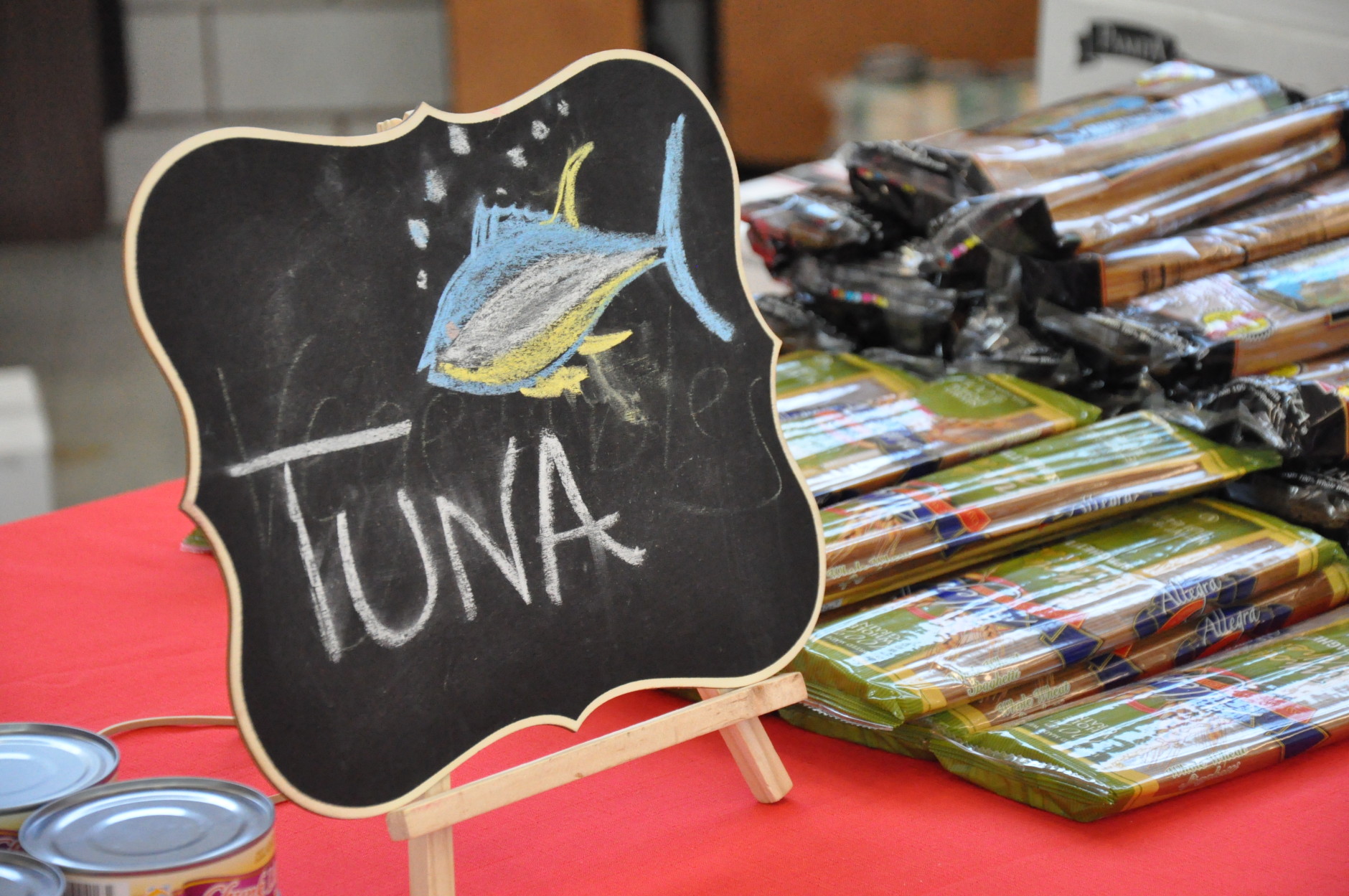
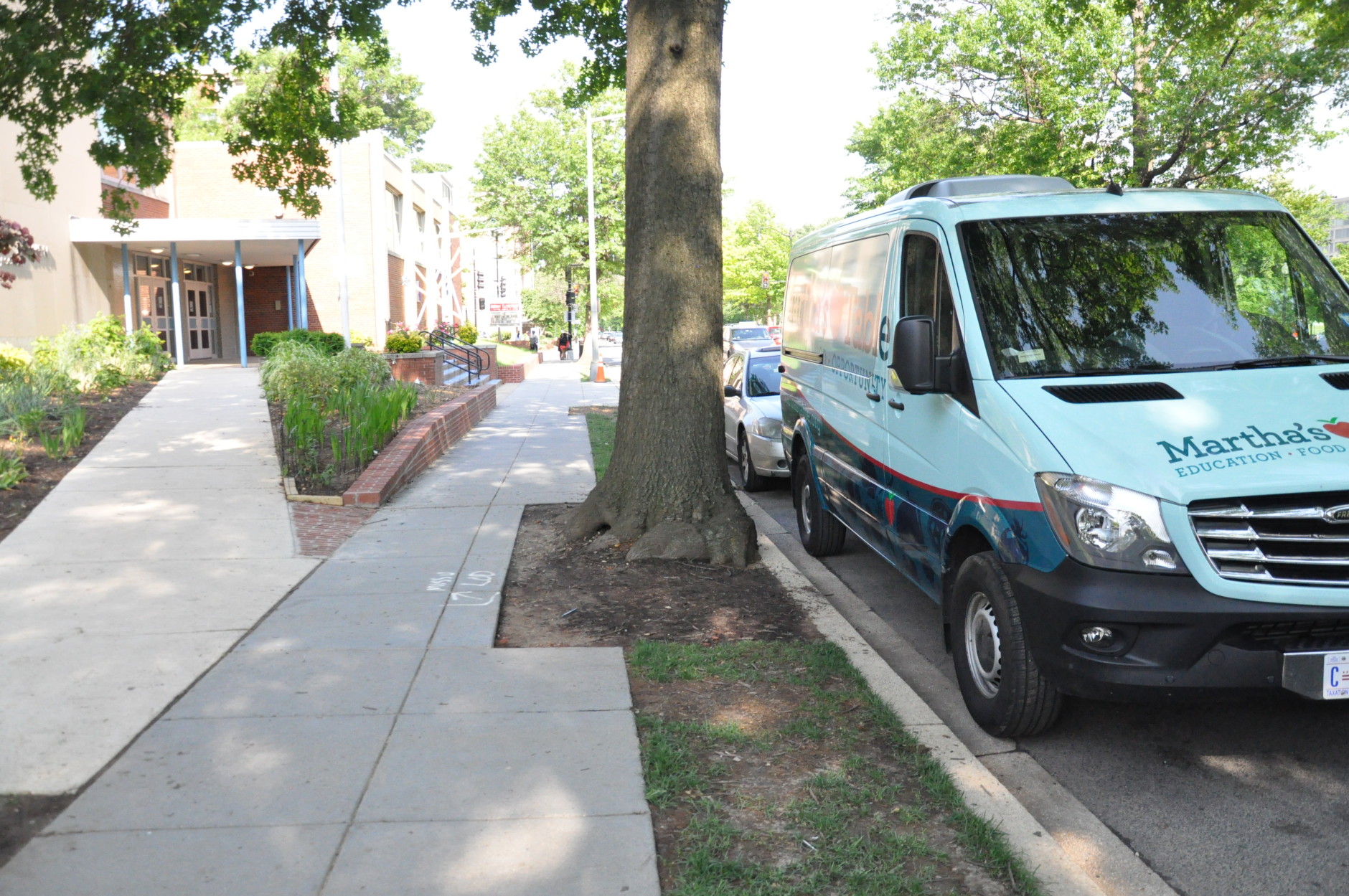
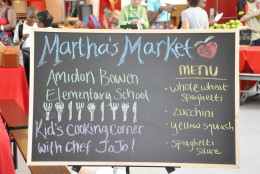
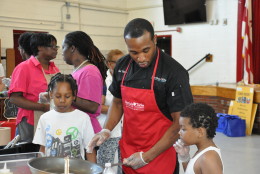
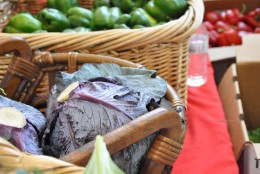
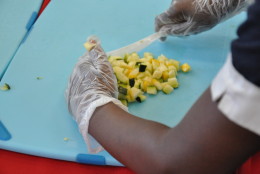

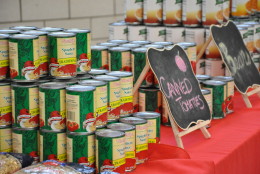
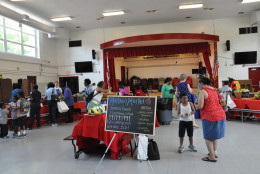
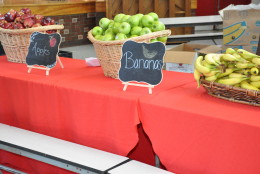
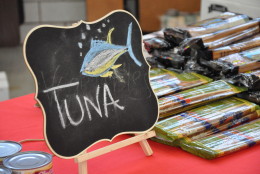
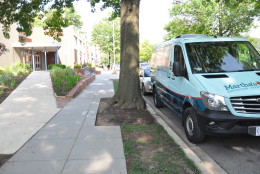
WASHINGTON — It’s an idyllic spring afternoon near D.C.’s Southwest waterfront: Kids play peacefully with their friends, occasionally taking a break to dance to music coming from a corner stereo. Parents float from one stand of fresh produce to another, while chefs tend to hot pans and fill the air with smells of sautéed garlic and onions.
It’s not the latest pop-up market to enter the District’s dynamic food scene. It’s Martha’s Market — a monthly program from Martha’s Table that brings fresh produce and shelf-stable food products into the city’s elementary schools.
“The idea is to have this great, wonderful vibe and lots of healthy produce,” says Caron Gremont, senior director of healthy eating at Martha’s Table. On a recent Tuesday afternoon, she was at Amidon-Bowen Elementary School for the monthly event.
“It’s supposed to be fun and really for the community,” she says.
Throughout the duration of the two-hour market, which starts at the school’s 4 p.m. dismissal, students and their parents can shop, free of charge, for up to 23 pounds of groceries with a minimum of 40 percent fresh produce.
“We really try to emphasize the fruits and the vegetables, since that is what everybody is not consuming enough of,” Gremont says.
But for the students, shopping is the least exciting activity on market days. Most of them flock to a long table in the center of the room and await “Chef Jo Jo’s” instructions.
“I want everybody to hold their knives up in the air,” Joel Thomas (aka: Chef Jo Jo) says to his captive audience.
Kids seated in front of cutting boards and large pieces of squash and zucchini follow his orders.
“Everybody make a thumbs-up. This is the correct way to hold the knife,” he continues.
Thomas continues to lead the young ones in the culinary lesson of the day.
Vatiff Holland has been coming to the Martha’s Market at Amidon-Bowen Elementary School with her 5-year-old great-nephew for about six months. She says in that time, her little one has developed an interest in cooking.
“He loves cooking. When we’re at home cooking dinner … he’ll help me season the chicken and flour it,” she says about her nephew, who especially loves fried chicken. “He’s a real good help in the kitchen.”
On the market day, Holland’s nephew chops zucchini and squash for Chef Thomas and assists the chef in sautéing the vegetables, which are later combined with whole wheat spaghetti and tomato sauce.
All of the kids are encouraged to taste the final product — but few need urging.
“No matter what kids are cooking, they’re going to take pride in what they make, and they’re going to be very passionate about trying what they make,” Thomas says.
The point of the cooking demonstrations is to introduce the children and their parents to foods they may not be familiar with, and to show them how to turn fresh ingredients into a healthy meal.
“There have been people who have never known what to do with parsnips or kidney beans, and we come up with simple recipes for them, like kidney bean salad, sautéed parsnips or roasted squash,” Thomas says.
“We’re basically showing them simple techniques that they can practice on food they’re not used to cooking.”
Printed recipe cards are available for students to take home, and all of the demonstrated dishes are made from ingredients available at the market.
Martha’s Markets launched in 2011 and currently operates in eight D.C. elementary schools throughout the school year and in the summer. In January, Martha’s Table started a similar program, called Joyful Food Markets, at four elementary schools east of the Anacostia River in Wards 7 and 8.
Gremont says the ultimate goal is to bring Joyful Food Markets to every public and charter elementary school in Wards 7 and 8 — a goal that may soon be within reach. Earlier this month, Martha’s Table announced plans to build a $20 million 40,000 square-foot facility in the Hillsdale neighborhood of Anacostia.
For the last 35 years, Martha’s Table has run its early childhood education, after-school care and healthy eating programs out of its headquarters on the 2100 block of 14th Street NW.
However, in recent years, that neighborhood has changed drastically. Pawnshops and liquor stores have been replaced by luxury condo buildings and trendy restaurants.
“We’ve been on 14th Street for 35 years, we’re really part of the fabric of the community there,” Gremont says. “But we’re also expanding and adding a new center in Ward 8 to continue working with the community there. There’s a need and we really feel like we can go and stand with the community there and make an impact.”
The new facility will open in 2018 and will offer the same child and nutrition services available at the 14th Street location.
“But in some respects, we will be able to reach more children,” Gremont says. Children make up about 30 percent of Ward 8’s population.
Gremont estimates a couple hundred people come through each school’s market to select their groceries, and most students in those schools receive free breakfast and free lunch at school.
“The gap really is dinners and weekends, so the idea behind the market was to fill that gap and support families,” Gremont says. “A lot of families will say that being able to come and get groceries here gives them more cash to pay bills and do other things.”
Adding additional markets in Ward 8 also gives the community another way in which residents can overcome the area’s food desert.
“Especially in Ward 7 and Ward 8, there just is not easy access to grocery stores, so being able to have really good high-quality produce here, for a lot of people, it just makes it so much easier to eat it,” Gremont says.
“I think what we’re really trying to do here is … provide healthy, high-quality food, and then also give children and families opportunity, support, encouragement to actually eat it — to make it fun to eat fruits and vegetables and healthy food. And I think the combination of those is what’s really powerful about what we’re trying to do.”



